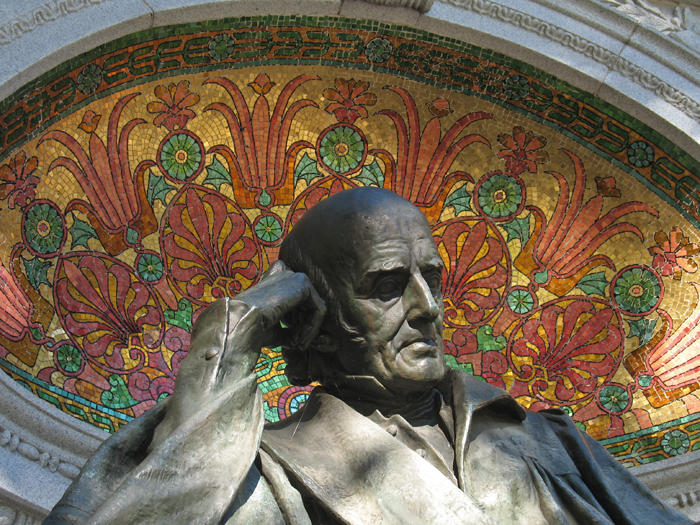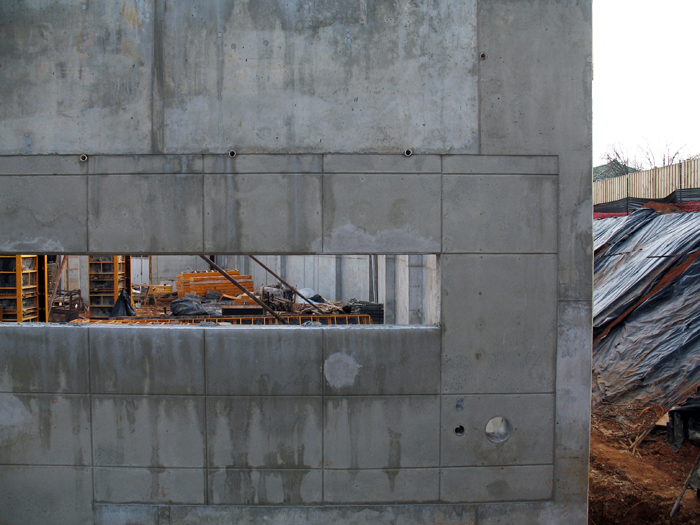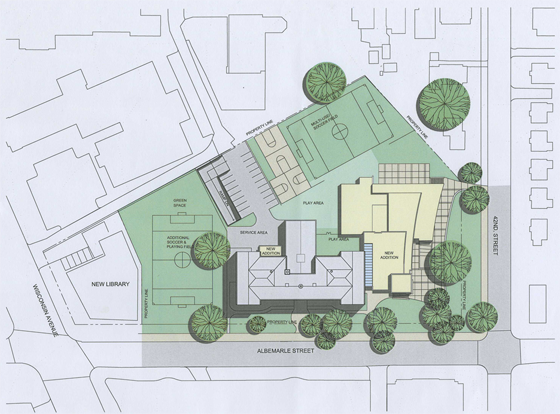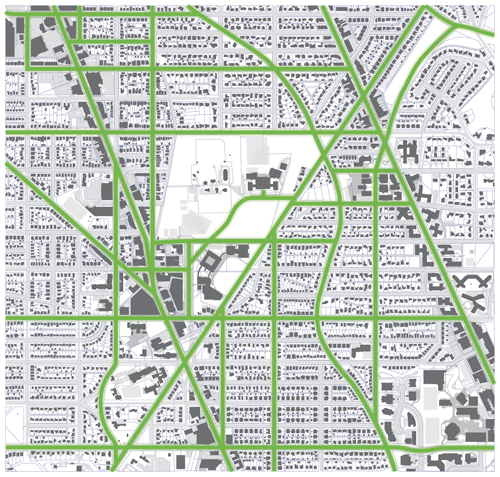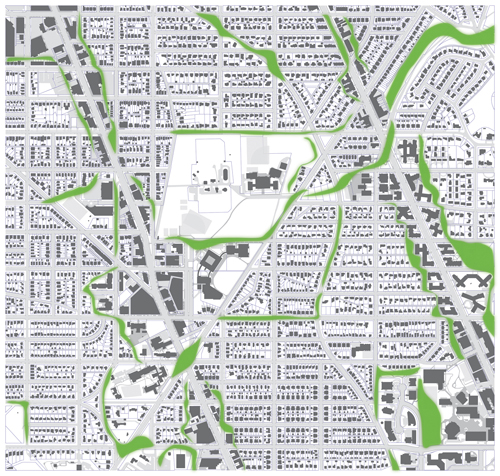
New Group Opposes In-Ground Rails
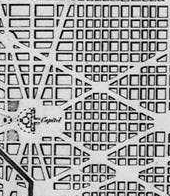
The debate over DC streetcars has heated up again with a new alliance against DDOT’s plans to install in-ground rails.
In a press release today, the Organization for Moderate Growth With Trackless Functioning and Better-than-Bus Quality announced that they would oppose any technology reliant on a guideway built into the streets of DC. The organization emphasizes the damage rails would do to the historic character of the roads within the Federal City. “Pierre Charles L’Enfant,” the statement reads, “never imagined streets crisscrossed by hideous steel rails. Maps from his period show clean, smooth streets with no indication of any disruptions of the classical beauty of the surfaces.”
Proponents of ground-supported streetcars have emphasized that rail-based vehicles did once crisscross the city. However, the press release seeks to preempt this criticism by arguing that that was an unfortunate aberration. “Washington, DC has a strong tradition of rail-free streets dating back to 1964, when city fathers fought hard to eliminate the unsightly and segregated street-rail system in favor of more democratic buses. Even in the transit-friendly times of the 1950s, the general public recognized that surface rails were an affront to America’s cultural heritage.”
Margarita Masguerra, a representative of OMGWTFBBQ insists her group fully supports the construction of streetcars. “The petition we are circulating emphasizes that we want to see diverse transit options for residents. Buses are not enough, sure. But streetcar tracks would be so devastating to the city’s image of large automobile boulevards that we want DDOT to stop and consider other options. “In Dnepropetrovsk, Ukraine, and Ponca City, OK, systems have been explored that employ no rails at all,” she continued, “Although we do not understand how these systems work.”

“Certain models from Boston and Philadelphia apparently hang from wires suspended above the line, creating the strongly defined structure that our organization recognizes as attracting growth.” Ms. Masguerra pointed out the results she had seen, but commented, “Speaking only for myself, I have been to Amsterdam and Dallas, and had there not been any rails, I think the streets with cafes and buildings could have been really nice places.”
Support for the group’s petition has come from a wide range of interest groups. Lon Anderson of the Mid-Atlantic chapter of the American Automobile Association questions the need for surface transit. “OMGWTFBBQ are too polite about the nonsense logic of these railroad people. If they want streetcars, can’t they just put more rails in the subway?”
Other opponents have raised the danger that in-ground tracks might pose to pedestrians. The increased incidence of tripping and stubbed toes is a genuine concern for small-footed locals. Amanda Hess, writing in the City Paper‘s Sexist blog, commented that “rails may disproportionately harm women, who are much more likely to be wearing heels,” saying that the supporters might have darker motives.
“The image of a woman fallen onto the tracks merely recapitulates a sexist image of a woman in need of saving before a big scary train. Sorry, the train died with vaudeville. No doubt, there are many “Nice Guy” transit fans just waiting for this possibility. Just because you help a woman up, doesn’t mean she wants you to take her back to your apartment for a little dissertation on railway signaling. Trust me, she probably doesn’t want to see your lunar signal, vintage or not.”
But even OMGWTFBBQ is willing to compromise and look at a variety of systems. The petition highlights the Wuppertal Schwebebahn, which suspends its rails in the air. “It’s a great system.” Masguerra says, “They’re hardly visible from the ground.” Another system mentioned is the Demontierbares Klappenschienenschutzsystem under consideration in Tübingen, Germany and Alexandria, Egypt. That technology employs panels that cover the rails when a train is not nearby. The tops of the panels can be inlaid with various road materials. When a train approaches the section of track, the panels lift up to reveal the rails and close when the train leaves. Also featured was Zeppelin Luftschifftechnik‘s guided semi-rigid airship system, which has been installed between 25 malls and 14 skyscrapers in Dubai.
Masguerra insists that her organization’s sole interest is in improving transit in the DC area. “Again, I just want to reiterate that we want to see streetcars in Washington,” she says, “And we’re committed to exploring all options to make that happen without rails.”
… and apparently Amanda Hess was pretty amused. No word from the Committee of 100.
Mixing New and Old at the Eisenhower Memorial
Yesterday, a panel selected a design concept by Frank Gehry for the Dwight D. Eisenhower Memorial The design is promising.
The large blocks form a circle, enclosing a single tree and a small pool of water. On the faces of the ring of stones, images cast in low relief and quotations in large type speak history to those inside. East and west of the central courtyard, groves of trees canopy informal plazas. At first blush, these spaces feel intimate and beautiful. Rising from just beyond the trees, large stainless steel screens supported by limestone columns enclose the space on the north and south sides. The screens will contain some of the sculptural program through a woven scrim that hides the forgettable Department of Education Building to the south. The street condition is undefined, bounded by the scrims except at three prominent areas.
The axis of Maryland Avenue cuts through the memorial, with the stone ring in the center. Building the memorial without disrupting the viewshed of the Capitol or traffic flow were seen as the two big problems. The Memorial Commission selected a design by Gehry that sidesteps the issue of sightlines, by removing one of eight columns and two sections of the screens. This way, the design frames the primary view of the Capitol with the same structures that fit it into the grid. In terms of the vehicular route, the panel rejected a vehicular road through the monument and instead created a pedestrian plaza. The site was located to move the monumental program off of the Mall. Drawing visitors, most of whom tour on foot, was equally important.
Gehry has tamed his own style is tamed for this project, although the ring of stones exemplifies the blockish forms he had been experimenting with since the opening of Walt Disney Hall. Mercifully, Gehry has also eschewed the dismal expressionism of a younger generation of memorial designers. The design team did not try to assign tremendous meaning to every little detail. Instead, it is a building that can be judged for its power and for its beauty, although people will disagree.
Continue reading ➞ Mixing New and Old at the Eisenhower Memorial
Details, Details: Hahnemann
The statue of Samuel Hahnemann at Thomas Circle is one of DC’s many unknown beauties. Although most of the structure is the monumental standard copper-granite-limestone set of hues, the half-dome that frames his head bursts into color as you pass your eye across it. What’s more, because the mosaic is partially hidden, it rewards close examination.
North of Tilden: Construction Phases
It’s spring, and that means it’s construction season. Particularly in Tenleytown, a number of big projects have finally started, some after 6 years of delays. The headlines:
- Planning: AU presents their twenty-year plan to ANC 3F meeting. Hilarity ensues.
- Design: Shalom Baranes designing Babes site.
- Approvals: Chevy Chase Park will gain field lights.
- Demolition: If the Van Ness Walgreens is coming in, the gas station has got to go.
- Staging: Fences are up at Wilson.
- Site Preparation: Janney sets up temporary classrooms.
- Foundation: A 4-story condo is going up on Harrison street
- Structure: The Tenley-Friendship Library is no longer a hole.
- Commissioning: The placeholder building at Tenleytown is complete.
- Commercial Fit-out: The 4900 block is getting a pizza place.
And the stories below…
Sand Moon
It’s a sort of tale of karma passed through the lens of Upper Northwest slackers. Produced in 72 hours in 2008, is also a showcase of DC’s highlights, such as the roof of the Tenleytown CVS, truck barrier planters, Mazza Galerie, the Chevy Chase Starbucks, and Potomac Video.
The film runs for 21 minutes and stars Mason Cash (Murch), David Iscoe (Lafayette), Tommy McCarthy (Murch), and the rest of the Cocaine in Motion crew.
A Look at the Janney Expansion
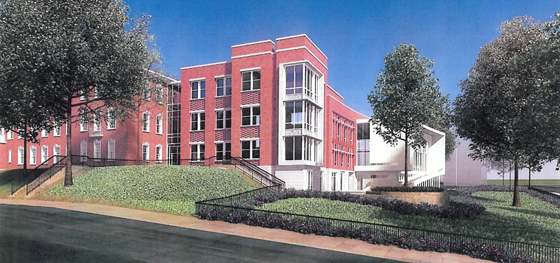
I finally got some images of the proposed Janney School extension. I like it – but it could have been better. With a few objections, I like its conception. Devrouax + Purnell, best known for the Washington Convention Center, the Pepco Building, and Nationals Park, here produced an interesting and attractive school building. However, the location where they have chosen to place the wing results in a lost opportunity for Janney and the community in general. Like too many developers and architects, they approached Tenleytown planning to not upset the status quo. However, any public facility should be designed with an eye to the future – and the current state of Tenleytown cannot last.
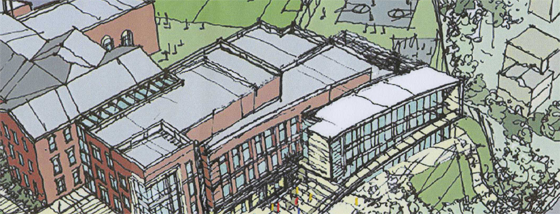
Beginning with the generous setback along 42nd street, the architects attempted to hide the building as much as possible, so as not to intrude on the neighborhood. Although the Albemarle façade extends to the cornice line of the 1923 building, the masses of the building gently diminish into a low white structure that encloses the gym. Moving south along the western face, the building curves gently, from a tower to the first private residence down the block. The architects employed the shape subtly, repeating the curve in each mass to limit its effects. It does successfully integrate into the site.
However, this hesitant approach is not appropriate here. The architects should not have set the building back from the street so much. In doing so, they have reduced the feeling of enclosure afforded by a consistent streetwall, produced an marginally useful green space, and missed an opportunity to relocate the playing field at the center of the Tenley Library Public-Private Partnership debacle.
For the 2007 plan to build a library with several floors of condominiums on top focused on the loss of recreation space (the rightmost field in the image above) for Janney Students. Some of that space would be consumed in the footprint of the condominium structure. However, had the architects located the new wing closer to the property line, they might have opened up space to relocate the eastern soccer field. In a political environment as vicious as Tenleytown’s, a mutually agreeable solution would have been a rare happy ending.
That lost opportunity is my main complaint – but there’s much more review below.
Dear Metro
If the Gunn Report is too scary to show us, then you really have to show us.
Regards,
Neil
Reno Park Update 100302: Lynch
When he wrote the book, Lynch interviewed a wide array of urbanites to understand how laymen organized, remembered, and navigated their neighborhoods and the city at large. He found that most individuals organized their cities with five archetypal patterns: paths, edges, nodes, districts, and landmarks. One caveat of this induction is that for each person, the definitions vary. The perception of paths depends on a destination and the familiarity with the neighborhood. On the other hand, the designation of edges and districts tends to be more consistent among locals. So, unlike my neighborhood maps, I drew more on personal experience, while also searching for objective measurements.
For example, the paths map (below) is based on the map of locality. The route to a front door might be unique, but there’s an appreciable amount of travel along certain major roads. So, I picked out the bigger paths. I’m willing to bed that most people would see these as frequent routes. Note that this does account for vehicle travel.
The second element is the edge. Edges form in gaps and hard shifts between building types. Parks and hills constitute much many of the edges unrelated to zoning. These breaks are some of the more prominent physical characteristics in a city, and I believe they encourage neighborhood division like nothing else.
OK, keep going, there are three more elements…
Reno Park Recap: Giving Northwest a Bad Name
Loyal readers of цarьchitect probably know that I hate the official name of the neighborhood I grew up in, North Cleveland Park “Wakefield.” Hopefully, that name will finally die. But my grouchiness about this coincided with an interest in the way that architects determine, delineate, and represent the concept of place. The goal of renaming an insignificant neighborhood in DC did dovetail nicely with my less modest plans to overturn planning and real estate practice.
So, the stupid name I did not know until I was 23 forms the starting off point for this discussion. That name lacks the lacecurtain cachet of “North Cleveland Park” or the actual uniqueness of “Tenleytown.” It’s a white-bread name reminiscent of too many other suburban developments. And, in fact, most of the area West of Connecticut Ave, North of Albemarle St., and East of Nebraska Ave was developed shortly before World War II and is one of the last areas to be developed as a tract in DC.
Because this name and others in the area came with the developments, neighborhood names tend to be bounded by major roads. Yet the centers of community and busy commercial areas. So, residents have ended up with indistinct locations bearing forgotten names and very popular ones with no names but provisional monikers, like “Comet Corner” and “Van Ness.” Or, according to City Paper, the area consists of Upper Caucasia, Connecticut, and Subarubia.
People have been attempting to name the area between Chevy Chase and Cleveland Park for over a century. Tenleytown may have grown up around John Tennally’s Tavern, but family names like Nourse and Dryer have disappeared from maps. In the late 1900s, the first developers came along and tried to add Armsleigh Park, Colorado Heights, Mount Airy, and Gizor. What seems to make a difference in whether the names stuck or not is whether the neighborhood has a clear social and commercial center. Tenleytown and Georgetown have such places. Forest Hills and AU Park do not.
Continues
Continue reading ➞ Reno Park Recap: Giving Northwest a Bad Name

